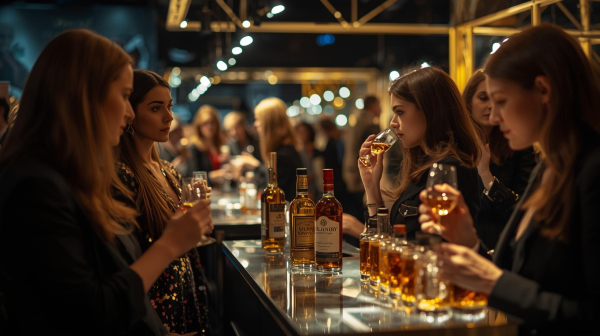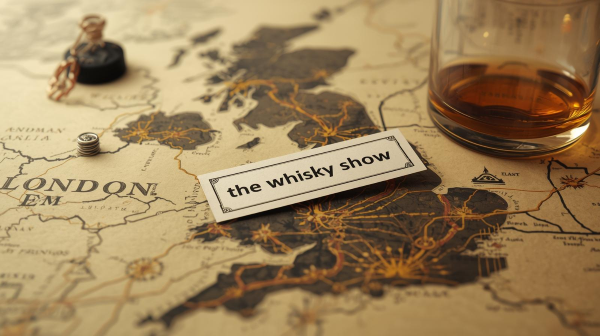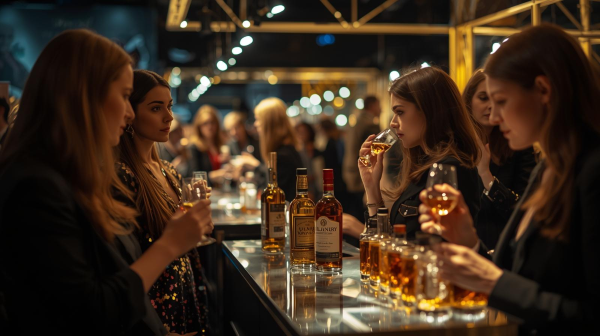Bringing Sips to Lips
Scotch whisky's vast consumer base is not growing as it was only a few years ago and many are trading down. But at all the whisky festivals around the world, the passion among true believers is undimmed, as Ron Emler discovers …
You could travel the globe virtually non-stop to taste whisky.
There are myriad shows and events dotted around the calendar at which Scotch features for sampling and at which experts guide afficionados through masterclasses on the mysteries of distilleries, styles, ageing, blending and tastes. The venues stretch from Melbourne to Munich, from Paris to Sao Paulo and from New Orleans to Maputo (Mozambique).
Scotch whisky itself is enduring tough times, not least because of President Trump's 10% tariffs and because consumers are trading down or even closing their wallets as inflation shrinks their disposable income. As a result, some distilleries are being mothballed while others are on reduced production runs.
However, the thirst for knowledge and the opportunity to taste the water of life is undiminished. Seemingly attending at least one whisky festival has become a rite of passage.
Among other events, Scotland hosted the Fife Whisky Festival in February, the Spirit of Speyside Whisky Festival in Apri, the Fèis Ìle (Islay Whisky Festival) in May, plus significant shows to come in both Edinburgh and Glasgow. Even comparatively remote Campbelltown and Orkney hold their own annual events to celebrate their produce, including, of course, the local drams.
Down South there is November's English Whisky Festival in Birmingham plus fairs in Bristol and Manchester, while the sell-out Whisky Show in London has just hosted record numbers at its 17th incarnation at the Old Billingsgate market in the shadow of Tower Bridge.
Unlike other international events which feature myriad spirits, London concentrates on whisky, though not just Scotch. While all the big Caledonian producers were featured, this year's exhibitors featured distillers from New Zealand, Australia, Japan, Taiwan, India, the USA, Romania, Denmark, Norway and Finland.
"It's all about bringing the whisky community together to enjoy some incredible drams and learn a little along the way," says Dawn Davies MW, the buying director of the Whisky Exchange and the show's organiser.

The Whisky Show's 3,500 capacity is evidence that interest in whisky is as keen as ever but satisfying that curiosity came at a price. The cheapest ticket (for Friday evening) was £85 while the cost of attending all three days was £285. But that did not deter the enthusiasts.
For that visitors could taste from up to 1,500 separate bottles and use a "Dream Dram" token to sample some of the rarest whiskies in existence, all costing more than £500 a bottle and many not available to buy.
More than 1,000 of the different whiskies on show were available to purchase at the Whisky Exchange's pop-up shop – at least until the most coveted sold out.
With such an array of samples available, overindulgence is a temptation, but Davies and her team were swift to react. "We are very conscious about health and safety," she says, so not only were there plenty of water stations but also every ticket entitled visitors to a substantial meal (Slow-Cooked Rump of Beef, Grilled Hake or Chickpea & Spinach Coconut Curry). Copious coffee supplies were also readily to hand.
In addition to the above, every year London's Whisky Show offers guests a wide range of masterclasses overseen by Davies herself and celebrated commentators Dave Broom and Serge Valentin, whose tasting notes on whiskyfun.com of more than 20,000 different drams have attained almost gospel-like fame.
The masterclasses are designed to offer the opportunity to taste new and rare offerings. This year they included remaining whiskies from closed sites such as Glenugie, Glen Albyn, Convalmore and Caperdonich.
Similarly, the tasting of drams from the "ghost" distilleries Brora and Clynelish before their closures (and subsequent rebirth by Diageo) was sold out weeks before the show.
Distilleries have come to use the London Whisky Show as a launch pad for their latest lines, especially as it is timed to lead into the year-end gifting market. A rapid count suggested that there were more than 100 new offerings on show.

So, apart from offering some of the rarest expressions of their Johnnie Walker family, Diageo's team of brand ambassadors were on hand with the newest addition, Black Ruby. Meanwhile Glenfarclas launched its new UK exclusivity, a 35-year-old single cask Scotch.
"It's all about liquid on lips," said Peter Donnelly, spirits director for Pol Roger Portfolio, the UK agents for Glenfarclas.
"It's a great platform for interacting with existing customers and attracting new ones, letting them try new products and talk about new ideas. London is by far the best international show, and although we only have the UK agency, we can give feedback to the managers and distillers from international customers."
"Each year we will be at around seven or eight UK festivals," he continued. "So we get more than 10,000 people to taste, to tell them about the history and introduce them to new products. If we can convert 10% to Glenfarclas, that is terrific."
Thom Watt, brand controller at Fettercairn, said: "We're not the biggest or best-known distillery, but it feels like we're making a name for ourselves with people who are really passionate about whisky.
"For us, coming to the show is all about seeing and hearing the reaction of the most interested and opinionated whisky fans. Their views really do matter, and we love that we get to hear those first hand. We think with new releases such as our Vanguard Series, there's a chance to show something a little bit different".
These are, he says, "boundary-pushing whiskies" The first was a non-age statement created from hybrid Scottish/American oak casks. Fettercairn is at the forefront of a programme to re-establish the use of Scottish oak for maturation.
But the real "test bed" was for a 29-year old Fettercairn created from a French "pink oak" cask from Demptos in Bordeaux. Only 99 bottles were filled, selling at up to £2,500 apiece.
So popular has London become that Davies has a pleasant problem. It has virtually reached its capacity at the Old Billingsgate venue, even more distillers want to be there – most reckon it is one of the key three events in the global calendar along with Paris and Las Vegas – and it is a sell-out.
So, might it move home to meet demand?
"The logistics are insane," says Davies, "The costs go up every year but we will stay where we are for the foreseeable future. I really don't want to put up the price to the consumer. But next year we will see how we can make it bigger as well as even better."

Ron Emler is a financial journalist who has observed the drinks industry for 50 years. Following a career on The Times and the Sunday Telegraph, he is consultant City Editor at The Drinks Business.
